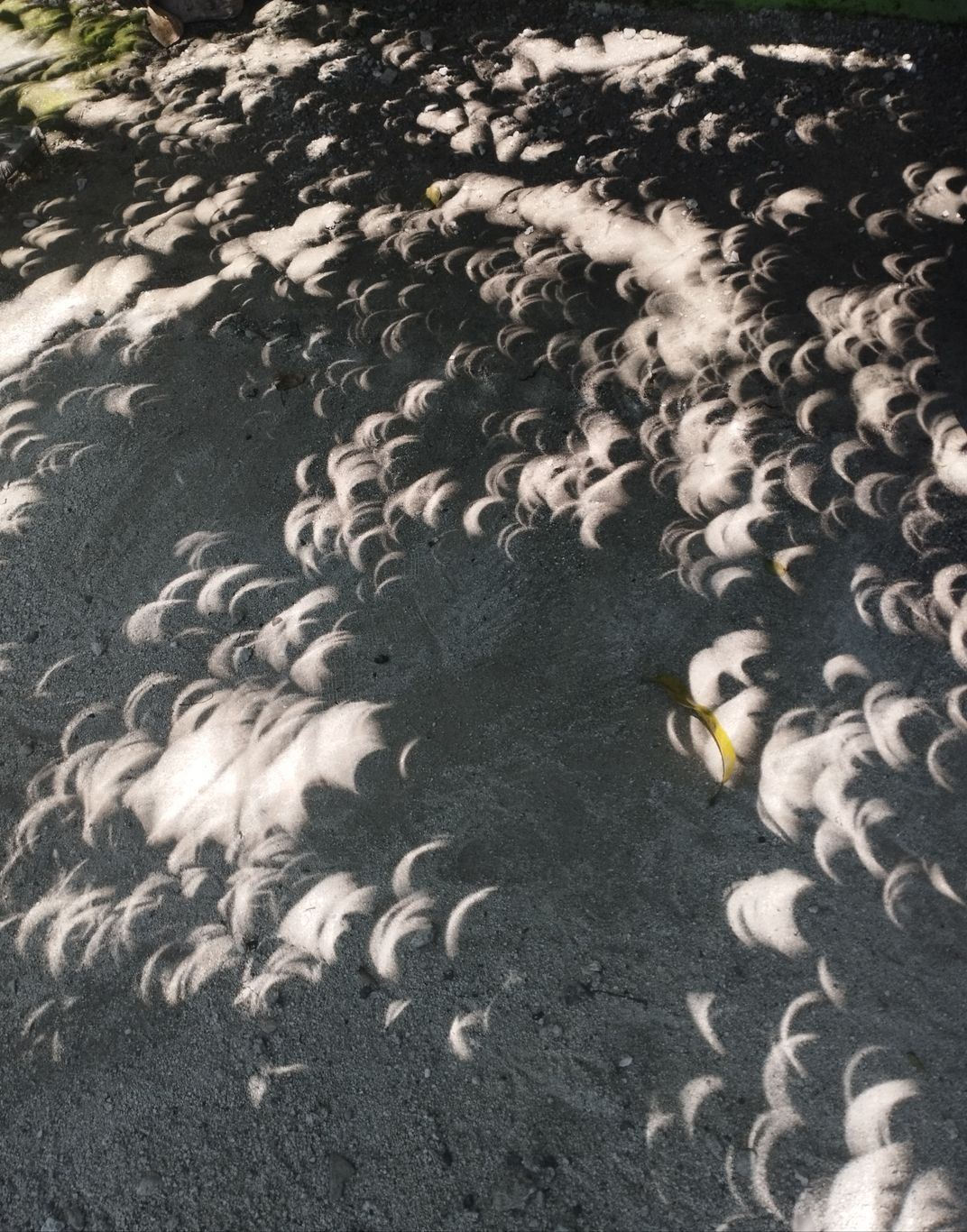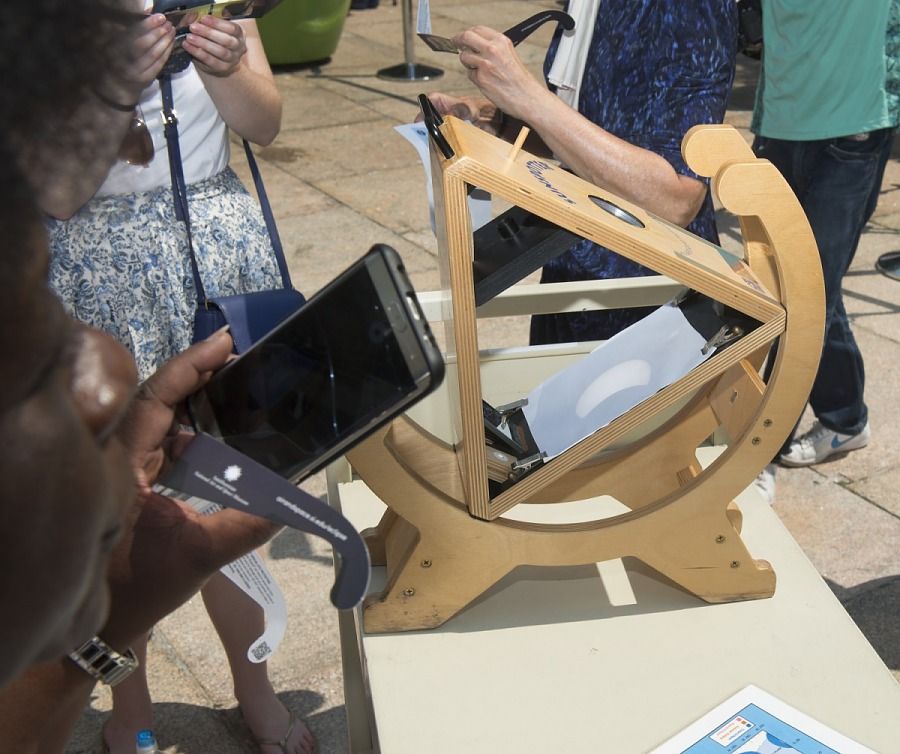Beyond Totality: Appreciating the Partial Eclipse
If you can’t be in the path of totality for a solar eclipse, don’t lose heart! A partial solar eclipse is still worth experiencing.
/https://tf-cmsv2-smithsonianmag-media.s3.amazonaws.com/filer_public/53/52/5352416c-5af7-410a-a97d-2cecba0e82fa/eclipse_2017_070.jpg)
A total solar eclipse happens when the Moon passes between the Sun and the Earth at a close enough distance to completely block the Sun’s light, creating darkness during the day.
During the April 8, 2024, eclipse, oarts of Texas, Oklahoma, Arkansas, Missouri, Illinois, Indiana, Ohio, Pennsylvania, New York, Vermont, New Hampshire, and Maine are in the path of totality—meaning that the Moon will completely block the Sun.
But if you can’t be in the path of totality for a solar eclipse, don’t lose heart! You can still see the eclipse from outside that limited region. The partial phases of the eclipse (when the Moon only partially blocks the Sun) will be visible over a huge area. Here are some reasons why your partial eclipse experience will be awesome.
1. Duration
The partial phase of the eclipse takes multiple hours, as the Moon crosses in front of the Sun. For comparison, the total phase of this eclipse will only last a few minutes. So during the partial eclipse, you have more time to go outside, wait for a break in the clouds, and check out the shape of the Sun using a safe viewing method. Those observers in the path of totality will also experience a partial eclipse leading up to totality, and afterwards as well.
/https://tf-cmsv2-smithsonianmag-media.s3.amazonaws.com/filer_public/8f/2b/8f2b8657-c79b-474a-9a3b-045157da1f6a/shutterstock_2302600549.jpg)
Emily Marie Wilson/Shutterstock
2. Motion
For me, one of the most amazing things about an eclipse is also one of the simplest: we can watch the Moon moving! We’re used to seeing the Moon and Sun rise in the east, cross the sky, and set in the west. But during an eclipse, with the Sun as a reference point, suddenly we notice the Moon creeping along as it gradually passes in front of the Sun. The motion that we’re seeing is the Moon traveling around the Earth in its orbit!
The Moon appears to move about the distance of its own diameter through the sky every hour. That seems slow, until you realize it’s actually speeding through space at 1 km per second (or 2,290 miles per hour). The best way to notice this motion during the partial eclipse is to observe the shape of the Sun (using a safe method!) every 15 minutes, and compare it to how it appeared the last time you looked. If you’re using a method that projects onto paper, you can even trace the shape of the Sun onto the paper each time to create your own record of the Moon’s motion.
3. Projection Shadows

I also really love the crescent-shaped shadows that form under trees during the partial eclipse. When a distant light shines through any small opening, it will project a shadow that is the shape of the light source, not the hole. (Try it with an LED flashlight that has multiple little lights; shine it through a pinhole onto a flat surface, and you’ll see the pattern of the bright dots!) So when the Sun has a cookie-bite shape from the Moon blocking part of it, you’ll see that projected in all kinds of unexpected places, like the spaces between tree leaves or holes in a garden fence. You can create this effect with common household items with a saltine cracker or a strainer.
4. Pictures
Photographing the Sun during the total phase of an eclipse is complicated, and it requires special equipment and knowledge. On the other hand, a partial eclipse shows up nicely in eclipse glasses or as a pinhole projection. You can take pictures of the partial eclipse with a smartphone or small point-and-shoot camera via one of those two safe viewing methods.
Note: Eclipse glasses are NOT safe to use with a telescope, binoculars, or fancy camera! They are only meant to protect your eyes. A smartphone photo taken through eclipse glasses is okay, because the camera is small enough to be completely covered by the filter. But be very careful. Your camera won’t fare well if it’s exposed to direct sunlight. You can safely (and easily) get interesting pictures of eclipse projections, whether through a specific eclipse viewer or in the shadow patterns under a leafy tree.

